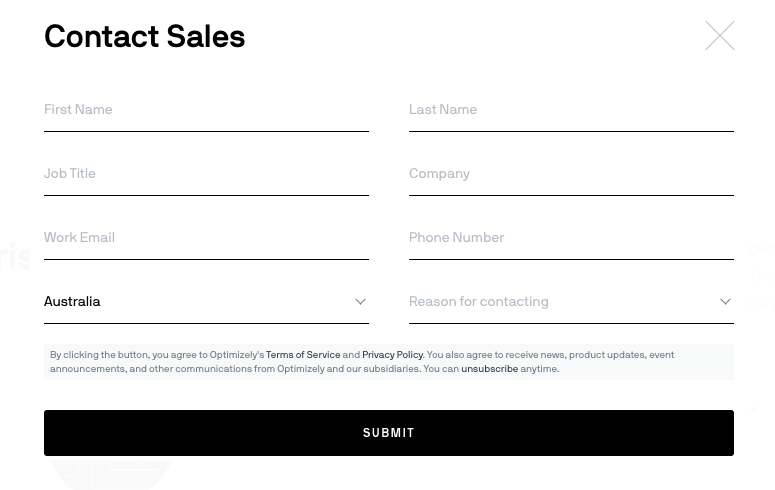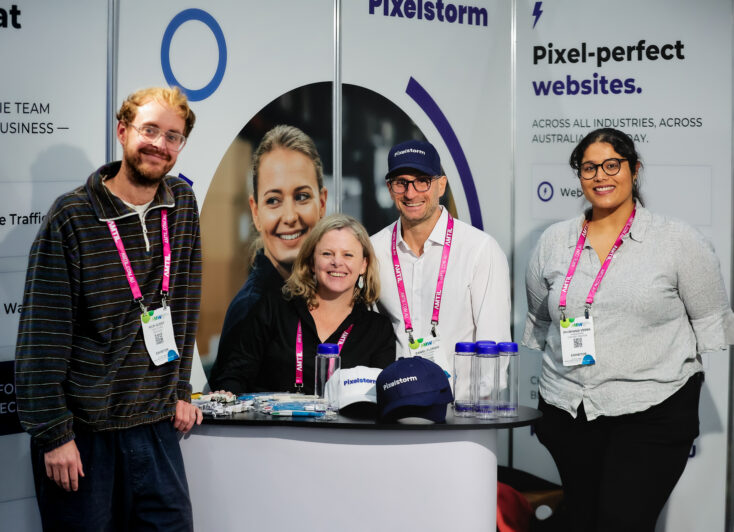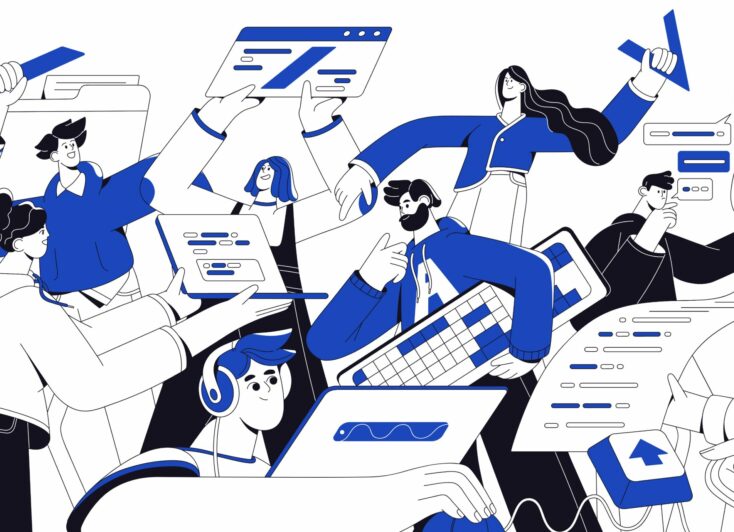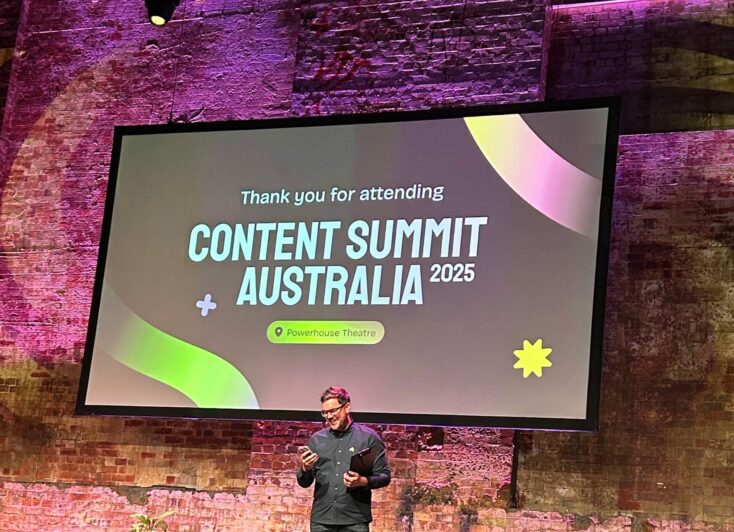Conversion rate fundamentally determines the failure or success of any business.
You could have a fantastic website that is user-friendly and contains compelling content.
You can have your SEO (Search Engine Optimisation) in check and drive hordes of traffic to your site each month.
But, here’s the thing…
Traffic and SEO are only part of the puzzle. If you are not able to convert visitors into customers, you will not succeed online.
To understand why your website is not converting as well as you want, there are some questions that business owners need to ask. These questions form the basis of what is involved with Conversion Rate Optimisation (CRO) strategies.
What is Conversion Rate?
Before we begin, let’s discuss the concept of conversion rate and why it is so important. A conversion may not necessarily be a sale. A conversion is the fulfilment of any goal. For example, it could be to get an email for an email list or download a free eBook.
But, for simplicity, let’s pretend the goal is to make a sale.
Let’s say you have 1000 visitors to your site per month and 10 of them make a purchase; your conversion rate would be 1%.
For simplicity, let’s say the average sale is worth $100 with a profit of $30. By increasing your conversion rate to just 2% would immediately double your sales to $200, profits of $60, and customer base. The increased customer base is then likely to further increase sales and profits in the future.
What is CRO (Conversion Rate Optimisation)?
In 2020 and beyond, the majority of marketing is and will be digital marketing. Businesses today fully appreciate the importance of a strong online presence and its power to reach their audience.
Shops have been replaced by eCommerce websites, but the customer remains the same. Back when shops ruled the shopping landscape, customers were heavily influenced by the store’s décor or customer service. Whereas, nowadays, visitors to a website are similarly influenced by the user-experience when browsing a site.
Essentially, it is the content and user experience of a website that is critical to figuring out the answer to the all-important question: “how to increase conversion rates?”
So, what are the steps of conversion optimization? Firstly, the aim is to optimize the components of the website, including all pages, blog posts, landing pages to convert traffic into leads and sales.
Many businesses make the mistake of thinking small details like colour changes, position on the page of calls to action, display width or call to action copy are what CRO is.
However, while these are important and can make a significant difference, they are not the only ways to increase conversion rates.
They are minor tweaks— mere icing on the cake. CRO is much more in-depth and should involve a broader investigation of a site’s content, functionality, and performance.
While the concept of CRO may seem new, it has existed at some level since the early days of the internet. Sites have long experimented with switching landing page designs, restructuring site layouts or banners, or even proposing different offers or price points.
However, in recent years, the category has seen a dramatic change with the addition of data-driven analytics.
According to Forrester, Insights-driven businesses are growing at an average of more than 30% every year. By 2021, data-driven organisations are predicted to take $1.8 trillion annually by leveraging their competitive advantage over their less informed peers.
Google Analytics provides insight into website performance and where to direct focus as a priority to improve performance. There are several analytics metrics that contribute to rate optimisation including, bounce rate, exit rate, device comparison performance, browser type comparison performance, conversion by acquisition source, and many more.
How to Increase CRO – Conversion Rate Optimisation Metrics
Typically, increasing conversion rates involves coming up with ideas about how to improve webpage elements, derived from studying data, heatmaps and user experiences. These ideas are then tested via A/B split testing or multivariable testing for data-driven confirmation. Once a better option has been established – usually, after statistical significance – it can be implemented on the webpage which will hopefully result in higher conversions.
So, in a nutshell, CRO is about hypothesizing about how to improve specific elements on your website, testing and then making informed decisions based on the test results.
There are many conversion rate optimisation metrics employed to help site owners.
Conversion rate optimisation tools such as feedback forms, heatmaps, and scroll maps provide website owners invaluable insight into what is working and what isn’t.
Why CRO is Important
Now, if you want to grow your sales, you would need to get more traffic – which most likely will involve a higher SEO Company expenditure – or you could try to improve your conversion rate so that more of your existing visitors make a purchase.
Increasing visitors not only can be costly, but it often results in a decrease in traffic quality. Which means doubling traffic does not equate to a doubling of conversions.
However, focusing on your existing traffic – which is more likely to be more highly targeted – and studying data-driven analytics of your existing user base, will help you find ways to personalise the experience for them.
So, let’s get down to it!
In our experience with conversion optimisation,, we’ve found these 7 tactical tips are a great way you can improve conversion rates on your website.
- Increase Your Website’s Speed
Number one on the list and for a good reason due to its importance is you got to make your pages fast to load.
Speed matters.
Visitors expect to get the information they are seeking fast. If they don’t, they will move on, simple as that.
Faster loading websites dramatically improve the user experience, and a happy user is one that is more inclined to become a customer.
As a bonus, Google rewards faster loading websites too.
- Align Your Pages With Visitor Intent
Think from your potential customer’s perspective. People have an intention when they conduct a search in Google and click on your webpage. They have a problem that needs solving, or they are seeking information.
Bottom line is the customer is clear on what they want. If you can deliver it to them by aligning web page purposes with visitor intention, you will produce a positive impact, time and time again.
- Add Social Proof
No one wants to be a guinea pig.
Without testimonials and product or service reviews from past clients, potential customers may feel like doing business with you is a gamble.
Social proof puts visitor’s minds at ease, with countless studies showing the significant difference that customer testimonials and reviews can have on conversions. According to Smart Insights, the biggest improvements in conversion rate increments occur between 0 and 10 reviews, highlighting the importance of applying at least a minimum amount of reviews.
- Remove Excessive Form Fields
Have you ever been on a site and had a pleasant experience up to the point of reaching a form with excessive fields?
It is one of the most annoying things visitors to a site encounter and one of the fastest ways to kill your conversion rates.

source:https://www.optimizely.com/anz/
Remove all unnecessary form fields. Leave only the essential fields.
HubSpot researched the contact forms of 40,000 of their customers and found that conversion rate improved by nearly 50% when form fields were reduced from four fields to three.
Test forms UX (user experience) on mobile, laptop and ipad to see if the experience can be improved.
- Improve Your Call to Action (CTA) Copy
Boring, generic and non-specific CTAs won’t lead to maximising conversions.
All of the content is important on a website, but your CTAs are arguably the most important to get right.
Spend some time strengthening your CTAs, and you will notice an immediate increase in your conversion rates.
Tableau made a simple adjustment to their call to action.
Their previous CTA, “The Tableau Platform”, did not tell you much about what you can expect when you click that button. You don’t know if it’s a free trial, a demo, or an order form.
It has since been updated to “Try Tableau For Free”, which tells visitors exactly what they can expect after clicking it. If your site isn’t selling the benefits or solutions, it is probably a good time to consider a fresh web design for your business.
- Add Live Chat to Your Website
Most visitors coming to your site are interested in your products or services, but need encouragement to turn into paying customers. Depending on your industry, their decision to place a conversion could be fast.
They may have questions or doubts, keeping them on the fence and away from the crucial last step in the sales process.
Live chat tools are the perfect tool to help your audience overcome their hesitation. They allow you to engage with your customer, build a relationship and answer their questions, and provide a better user experience.
Neil Patel claims he helped his clients increase their conversion rates by 45% with live chat.
While the conversion rate optimisation metrics listed above are some of the most important and have proved to work for other sites, it is wise to test each one to see how it affects your website’s performance.
Each business is unique, and each site is unique. Just because one of these conversion rate strategies has worked for others in the past, it is no guarantee that it will work for you.
If you would like the help of a professional conversion rate optimisation agency to help you find the perfect blueprint for maximising conversions, call our friendly team today.







